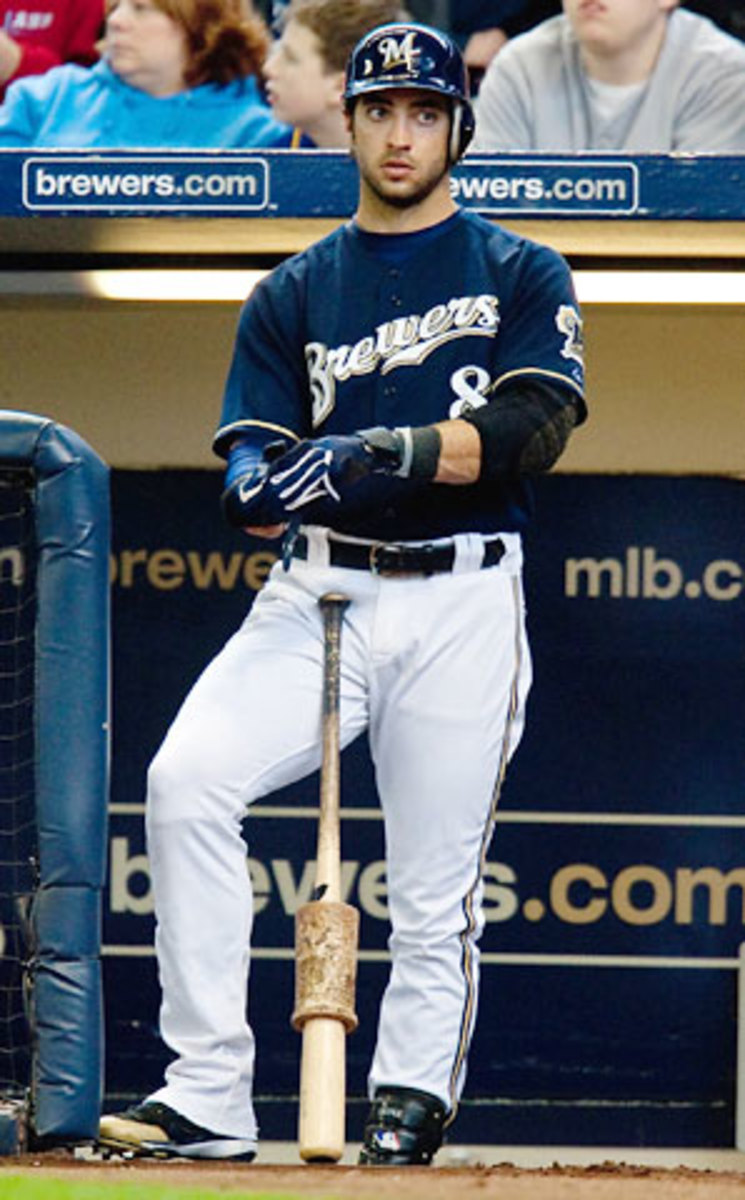
What we know and what we don't know about Braun's positive test
The baseball world was shocked by reports of Ryan Braun testing positive under the terms of MLB's anti-doping policy. Since I began covering the connections between baseball and performance-enhancing drugs in 2004, which led to my book The Juice, I've continued to follow the issue closely. The unique situation of an MVP-caliber player testing positive demands that we understand the process which has led to this report.
The testing process is very clear. The MLB policy is continually monitored and is considered the most strict among professional sports. The addition of blood testing that will begin in 2012 makes it even more so. Each player in baseball on a 40-man roster is subject to at least two random drug tests during each season. They can also get additional random tests, a number which will again increase in 2012. As well, there are additional random tests that occur during the playoffs. That means that players that have never tested positive for any banned substance are subject to as many as four tests in a league year. (Players that have tested positive previously are subject to an accelerated testing program with significantly more tests.)
Each test is monitored closely, from the collection phase to the final administration of testing. When a player is selected for random testing, he is taken to a "clean area" designated in each clubhouse. He is observed urinating in a provided sample cup, which is sealed and initialled. (Observed? Yes, that means what you think. The "full stream" must be visible from player to cup.) That sample is prepared and sent to MLB's designated lab.
Once at the lab, which is usually the WADA-certified lab in Montreal, the sample would be separated into "A" and B" samples. The "A" sample would undergo a full spectrum of tests, which would include one that looks at the ratio of two substances, testosterone and epitestosterone. The "T/E" ratio in most men is 1:1, but it has been shown that this ratio fluctuates wildly. Controlled studies have been shown that the ratio can go as high as 10:1 in men that have taken no exogenous (non-natural) testosterone. Any test above 4:1 triggers a second, more comprehensive test. At this stage, it is not considered a positive result. The ratio test is merely a trigger.
The "B" sample is then tested using one of several methods (MLB does not disclose which method is used, though carbon isotope ratios or chromatography are considered the state of the art.) This test is able to determine the presence and origin of exogenous testosterone. This presence, in any amount, is sufficient to find a player in violation of the drug policy. This testing can differentiate between endogenous (natural, produced by the body) testosterone and any exogenous variant. It can also determine the variant, of which there are several in use. Testosterone is present in all humans, male and female, though males have higher levels. Testosterone is also widely used for medical purposes. If you remember the "Is It Low T?" ads that ran incessantly during the MLB playoffs, you saw an advertisement for testosterone. Take it and you would test positive under MLB rules.
At this stage, several things are unclear. There are conflicting reports as to whether Braun's "B" sample was tested and showed exogenous testosterone. There are also reports of a second drug test, requested by Braun, that did not "test positive." I put that last in quotes because it's confusing. Remember, the "A" sample is merely a trigger. If Braun was re-tested and showed a T/E ratio below 4:1, that is not correctly called a negative test. Also, since the detectable period for testosterone is between 2 and 4 weeks, the timing of that second test is key if it is going to be used as an affirmative defense.
The most common defense at appeal would be a "tainted supplement." While many say this is a false positive, that is incorrect terminology. The test would be correct, in that there was the presence of a banned substance. Under MLB's policy of strict liability, a player would be responsible no matter how the substance got into his body. There is only one exception. MLB (and the NFL, among others) have a list of substances that are certified by the NSF. Known as the "blessed list," these substances can be taken with confidence that they would not be tainted. Any other supplement, such as the 6-OXO Extreme that caused a positive for Phillies reliever J.C. Romero, would provide the player no such defense.
Remember, the T/E ratio is not used as a positive test. The reason is that this ratio can be easily manipulated. In fact, BALCO was known to use a transdermal patch in order to manipulate the ratio. Instead of trying to reduce testosterone, they increased epitestosterone after discovering that the testing process did not differentiate between a 6:1, 12:2, or 24:4 ratio. (The ratio was reduced from 6:1 to 4:1 in 2007.) What we should be waiting to hear is whether Braun's original sample had a positive and definitive result for exogenous testosterone.
With Braun's representative's saying that they are mounting an "aggressive appeal," it is important to remember what we know and what we don't know. At this stage, there are enough conflicting reports to reserve judgement, especially given the indication that this result is in the process of appeal. The original report from ESPN's Outside The Lines is certainly troubling, but it is hardly definitive.





